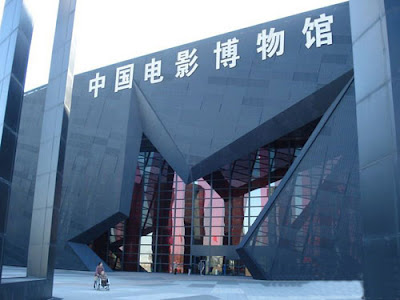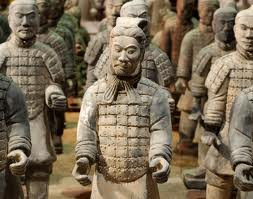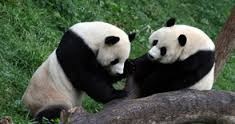As the biggest developing country of the world and the popular travel
destination for numerous foreigners, China has a long history of more than 5000
years, which brings up the resplendently rich modern civilization. So, China is
a great county with its own culture and civilization.
What should you have to experience for your China tour, and what are the ones
that can be mostly symbolize China, helping you know much more about China and
its culture.
Here, we list the top 10 Chinese symbols for your convenience, including,
China Great Wall, China Giant Panda, Lantern, Beijing Opera, Jiaozi, Red Flag,
Qipao, Knotting, Kungfu, Sedan Chair.
1. The Great Wall
There is an old saying: "You are a real man until you climb up the
Great Wall", which reflects the Chinese People's spirit of courage and
persistance. The Great Wall of China, one of the greatest wonders of the world,
was listed as a World Heritage by UNESCO in 1987. Just like a gigantic dragon,
the Great Wall winds up and down across deserts, grasslands, mountains and
plateaus. It is a remarkable piece of engineering and is the most famous symbol
of China.
2. China Giant Panda
The giant panda, regarded as one of China's National Treasures, is
on the verge of extinction. Today there are fewer than 1,000 giant pandas living
in the world. The giant panda is the symbol of eco-environmental conservation.
Visitors to China can see this reclusive animal in Sichuan Province's Chengdu
Research Base of Giant Panda Breeding. We hope, with their cute faces, unusual
beauty and grace, giant pandas can bring visitors to China pleasure and
enjoyment.
3. Chinese Lantern
Lanterns play an important and irreplaceable role in Chinese long
history and symbolize the brilliant culture of China. The art of lanterns, as
the precious traditional culture of Chinese, is also inherited and continues
among folks.
The craftwork of lantern is still widely used in current society
which can be seen in some happy days such as the Lantern Festival, wedding and
celebration ceremonies. Besides, lanterns have some other functions in daily
life. For example, at ancient time, when there was no electricity, lanterns were
used as a tool of illumination, which brought great convenience to everyday
life.
4. Beijing Opera Show (Bianlian)
Beijing Opera is the quintessence of China. As the largest Chinese
opera form, it is extolled as 'Oriental Opera'. Having a history of 160 years,
it has created many 'firsts' in Chinese dramas: the abundance of repertoires,
the number of artists, opera troupes and spectators.
The costumes in Beijing Opera are graceful, magnificent, elegant
and brilliant, and mostly are made in handicraft embroidery. As the traditional
Chinese pattern are adopted, the costumes are of a high aesthetic value.
The
types of facial make-ups in Beijing Opera are rich and various, depicting
different characters and remarkable images, therefore they are highly
appreciated. Moreover there are numerous fixed editions of facial make-up.
5. Chinese Jiaozi
Jiaozi (Chinese Dumpling) is a traditional Chinese food, and is
greatly loved by most foreigners.
Dumplings are one of the major foods eaten during the Chinese New Year, and
year round in the northern provinces. Traditionally, families get together to
make jiaozi for the Chinese New Year. In rural areas, the choicest livestock is
slaughtered, the meat ground and wrapped into dumplings, and frozen outside with
the help of the freezing weather. Then they are boiled and served for the
Chinese New Year feast. Dumplings with sweet, rather than savoury fillings are
also popular as a Chinese New Year treat.
6. Chinese Red Flag
The flag of the People's Republic of China is a red field charged
in the canton with five golden stars. The design features one large star, with
four smaller stars in a semicircle set off towards the fly. The red represents
revolution; the five stars and their relationship represents the unity of the
Chinese people under the leadership of Communist Party of China (CPC).
Sometimes, the flag is referred to as the "Five Star Red Flag".
7. Chinese Qipao
The cheongsam is a female dress with distinctive Chinese features
and enjoys a growing popularity in the international world of high fashion. The
name "cheongsam," meaning simply "long dress," entered the English vocabulary
from the dialect of China's Guangdong Province (Cantonese). In other parts of
the country including Beijing, however, it is known as "qipao", which has a
history behind it.
8. Chinese Knotting
Chinese knotting is a decorative handicraft arts that began as a
form of Chinese folk art in the Tang and Song Dynasty (960-1279 AD) in China. It
was later popularized in the Ming and Qing Dynasty (1368-1911 AD). The art is
also referred to as Chinese traditional decorative knots. In other cultures, it
is known as "Decorative knots".
In February 2008, Corra Liew from Malaysia seek possibilities out from the
traditional Wire Jewelry Making technique, Chinese knotting is then merged and
presented in wire form. Corra addressed the technique as Wired Chinese Knot.
9. Chinese Kungfu
Kung fu and wushu are popular terms that have become synonymous
with Chinese martial arts. However, the Chinese terms kung fu and wushu have
very different meanings. The Chinese literal equivalent of "Chinese martial art"
would be zhongguo wushu.
In Chinese, kung fu can be used in contexts completely unrelated to martial
arts, and refers colloquially to any individual accomplishment or skill
cultivated through long and hard work. In contrast, wushu is a more precise term
for general martial activities.
10. Chinese Sedan Chair
A sedan chair is a human or animal-powered transport vehicle for
carrying a person, once popular across China. It has different names like
"shoulder carriage", "sleeping sedan" and "warm sedan" etc due to the time,
location and structural differences. The sedans familiar to modern people are
warm sedans that have been in use since the Ming and Qing Dynasties. The sedan
body is fixed in the wooden rectangular frames on the two thin log poles. The
top and four sides of the seat are enclosed with curtains, with a chair blind
that could be rolled open in the front and a small window on each side. A chair
is placed inside the enclosed space.
Resource :
http://english.eastday.com/e/top10/u1a5615805.html 

































